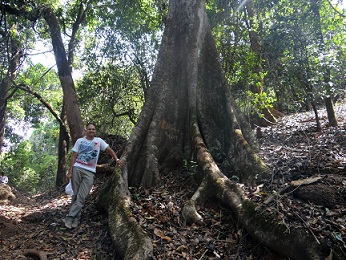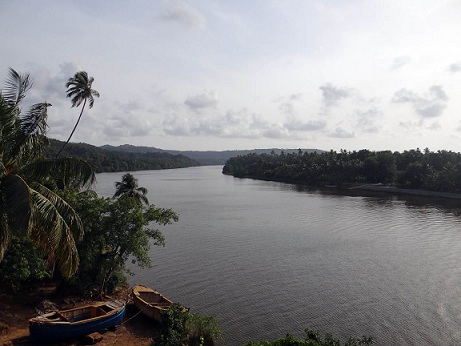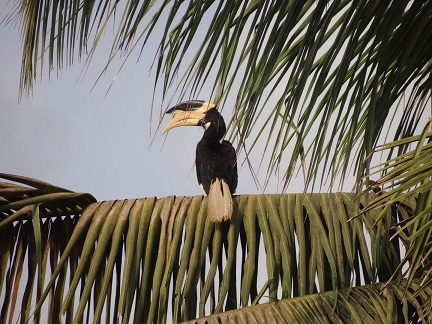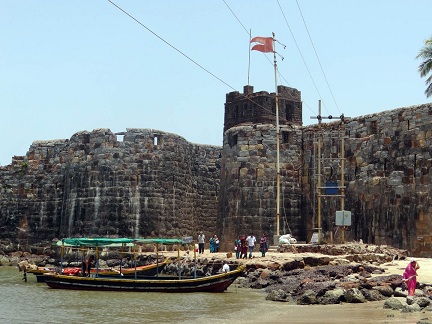Maharashtra, like most states of India, is rich in biodiversity and thus a potential destination for real eco-tourism. But as compared to the industrial growth and “land of opportunities” story, the wild side of Maharashtra is not so well known. The wildlife (including birdlife) of the state has not been documented as much in detail as compared to other states. Moreover, within Maharashtra the wildlife and forests of Konkan region, especially the southern districts of Ratnagiri and Sindhudurg, survive unknown to the outside world.
The forested tracts of Konkan are largely privately owned and till now stand as a good example of successful community conservation with a background of deep cultural, spiritual and sustainable livelihood concepts. The forests ranging from tropical semi-evergreen and moist deciduous to mangrove and a mixture of plantations and natural vegetation support a range of birds that are rare and endemic to Western Ghats or Sahyadri.
Over the years, I have visited most talukas of Ratnagiri and Sindhudurg and had a good opportunity to see the wonderful birdlife of the region first-hand in all its beauty and spectrum of colours, as I moved on the winding ghat roads that are so typical to Konkan.
The most celebrated bird of the Western Ghats is perhaps the hornbill. Of the four sub-species found in Western Ghats, I have regularly seen Indian Grey Hornbill, Malabar Grey Hornbill and the spectacular Malabar Pied Hornbill. I had sightings of the latter at various places in the talukas of Dapoli, Chiplun, Ratnagiri, Kankavli, Malvan and Dodamarg. The Great Pied Hornbill still evades me, but there are confirmed reports from many locations about their presence.
The Malabar Whistling Thrush with its heavenly melodious call has been greeting me in places like Parshuram and Amboli, while the brightly coloured Orange-headed Ground Thrush is equally conspicuous. If you visit Konkan just before the monsoon, the calls of Indian Pitta that migrates from the southern states every year would be music to your ears. This lovely bird is a riot of nine colours on its little body!
If you happen to visit the casuarina plantations along the beaches, you can rest assured about sighting the majestic White-bellied Sea Eagle, as they gracefully soar over the sea in search of fish. In places like Anjarle and Kelshi you are also likely to see the critically endangered White-backed Vulture, which is disappearing from across the country. Along the myriad creeks is seen the Brahminy Kite with its contrasting plumage of reddish brown above and white below. A quick boat ride down one of the rivers such as Vasishthi can be fruitful with sightings of Open-billed Stork, Grey Heron and Purple Heron.
Typically in a forested habitat one has to rely more on the calls, although sightings also happen as your eyes get trained to the sea of green. The sweet calls of White-rumped Shama, Black-hooded Oriole and White-browed Fantail soothe your ears, while the deep whistle of Crested Serpent Eagle and the mysterious sounding call of Indian Scimitar Babbler trigger your imagination!
Apart from that there is a long list of avian friends that you will see and hear in Konkan including Yellow-footed Green Pigeon, Orange-fronted Green Pigeon, Rufous Tree-pie, Scarlet Minivet, Oriental White-eye, Indian Peafowl, Grey Junglefowl, Blackbird, Brown-headed Barbet, Red-whiskered Bulbul, Puff-throated Babbler, Jungle Babbler, Indian Nightjar, White-breasted Waterhen and Green Bee-eater.
There is so much to see and experience, so much to conserve and so much to lose. With “development” happening at a rapid pace, habitats are disappearing and the local belief systems of live and let live are slowly giving away to the city bred materialistic culture. The sacred groves, private forested hills, mango plantations, mangroves, grassy plateaus and wetlands all need to be conserved. Without that the juggernaut of industrial and infrastructure development may swallow this avian paradise even before it is fully explored.
The author is the Communications Manager with BNHS and views expressed are personal.
 A curve on NH17 near Rajapur
A curve on NH17 near Rajapur
 Kudavale sacred grove in Dapoli taluka
Kudavale sacred grove in Dapoli taluka
 Karli backwaters, Malvan taluka
Karli backwaters, Malvan taluka
 Malabar Pied Hornbill, village Sarambal, Kudal taluka
Malabar Pied Hornbill, village Sarambal, Kudal taluka
 Sindhudurg fort, Malvan Taluka
Sindhudurg fort, Malvan Taluka